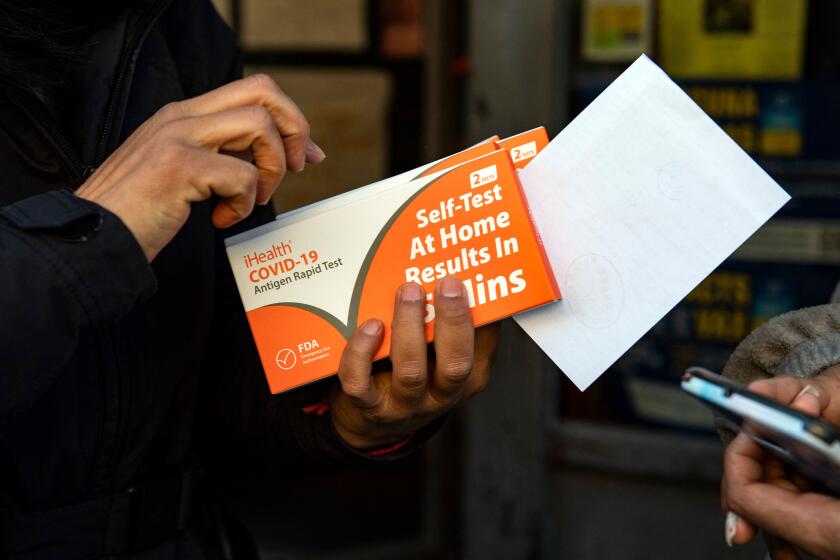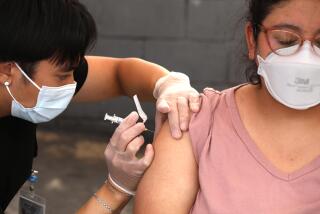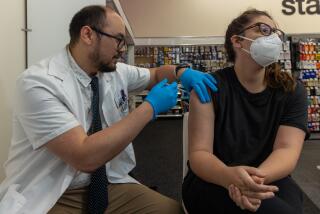A cold, the flu or COVID-19? How to tell the difference

- Share via
How do I know if I have a cold, the flu or COVID-19?
The viruses that cause colds, the flu and COVID-19 are spread the same way: through droplets from the nose and mouth of infected people. And they can all be spread before a person realizes they’re infected.
The time varies as to when someone with any of the illnesses will start feeling sick. Some people infected with the coronavirus don’t experience any symptoms, but it’s still possible for them to spread it.
Cough, fever, tiredness and muscle aches are common to both the flu and COVID-19, says Kristen Coleman, assistant research professor at the University of Maryland School of Public Health. Symptoms specific to COVID-19 include the loss of taste or smell.
Health officials say it’s OK to get your COVID-19 vaccine and flu vaccine at the same time.
Common colds, meanwhile, tend to be milder, with symptoms including a stuffy nose and sore throat. Fevers are more common with the flu.
Experts say testing is the best way to determine which you have since symptoms of the illnesses can overlap.
Despite some false portrayals online, the viruses have not merged to create a new illness. But it’s possible to get the flu and COVID-19 at the same time, which some are calling “flurona.”
“A co-infection of any kind can be severe or worsen your symptoms altogether,” says Coleman. “If influenza cases continue to rise, we can expect to see more of these types of viral co-infections in the coming weeks or months.”
With many similar symptoms caused by the three virus types, testing remains the best option to determine which one you may have. At-home tests for flu aren’t as widely available as those for COVID-19, but some pharmacies offer testing for both viruses at the same time, Coleman notes. This can help doctors prescribe the right treatment.
Californians have been racing to buy at-home testing kits. But chances are that the results aren’t making their way into the public health system.
Laboratories might also be able to screen samples for various respiratory viruses, including common cold viruses. But most do not have the capacity to routinely do this, especially during a COVID-19 surge, Coleman says.
Getting vaccinated helps reduce the spread of the viruses. The U.S. Centers for Disease Control and Prevention says it is safe to get a flu and COVID-19 shot or booster at the same time.
More to Read
Sign up for Essential California
The most important California stories and recommendations in your inbox every morning.
You may occasionally receive promotional content from the Los Angeles Times.












